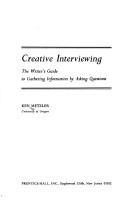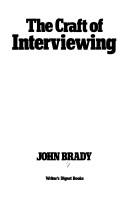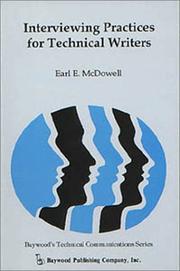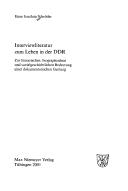| Listing 1 - 10 of 36 | << page >> |
Sort by
|
Book
ISBN: 9185152080 Year: 1975 Publisher: Lund : Litteraturvetenskapliga institutionen i Lund,
Abstract | Keywords | Export | Availability | Bookmark
 Loading...
Loading...Choose an application
- Reference Manager
- EndNote
- RefWorks (Direct export to RefWorks)
Book
ISBN: 3631549482 Year: 2006 Publisher: Frankfurt am Main : Lang,
Abstract | Keywords | Export | Availability | Bookmark
 Loading...
Loading...Choose an application
- Reference Manager
- EndNote
- RefWorks (Direct export to RefWorks)
Book
ISBN: 2130684831 Year: 1999 Publisher: Paris cedex 14 (Humensis 170 bis, boulevard du Montparnasse 75680) : Presses Universitaires de France,
Abstract | Keywords | Export | Availability | Bookmark
 Loading...
Loading...Choose an application
- Reference Manager
- EndNote
- RefWorks (Direct export to RefWorks)
Cette édition numérique a été réalisée à partir d'un support physique, parfois ancien, conservé au sein du dépôt légal de la Bibliothèque nationale de France, conformément à la loi n° 2012-287 du 1er mars 2012 relative à l'exploitation des Livres indisponibles du XXe siècle. Les secrets de fabrication de l'interview (comment établir une relation de confiance, formuler les bonnes questions, éviter les erreurs grossières) à partir des témoignages de chercheurs et journalistes ayant réalisé des enquêtes dans les sphères de la politique extérieure et intérieure, de l'économie et de la culture. « Copyright Electre »
Book
ISBN: 9782351133781 Year: 2021 Publisher: Paris : ediSens,
Abstract | Keywords | Export | Availability | Bookmark
 Loading...
Loading...Choose an application
- Reference Manager
- EndNote
- RefWorks (Direct export to RefWorks)
Comment diriger l’interviewé sans lui faire dire seulement ce qu’on a envie d’entendre et qui ne peut être finalement qu’un propos convenu ? Comment écouter la parole de l’autre sans se faire manipuler ? L’Interview est une fragile alchimie. Et c’est la qualité de l’interviewer qui stimule la pertinence de l’interviewé, sa capacité à exprimer des propos neufs, intéressants et authentiques. Sans ignorer les pièges et les dérives du registre, cet ouvrage étudie toutes les étapes de l’interview, de la préparation à l’utilisation. Il explique comment ajuster la technique aux buts poursuivis, comment maîtriser son comportement, diriger sans s’imposer mais aussi éviter d’être instrumentalisé par les briscards de la communication

ISBN: 0131897209 Year: 1977 Publisher: Englewood Cliffs (N.J.): Prentice Hall
Abstract | Keywords | Export | Availability | Bookmark
 Loading...
Loading...Choose an application
- Reference Manager
- EndNote
- RefWorks (Direct export to RefWorks)

ISBN: 0911654445 Year: 1978 Publisher: Cincinnati Writer's digest books
Abstract | Keywords | Export | Availability | Bookmark
 Loading...
Loading...Choose an application
- Reference Manager
- EndNote
- RefWorks (Direct export to RefWorks)
Book
Year: 1954 Publisher: Madison : International Universities Press, Inc.,
Abstract | Keywords | Export | Availability | Bookmark
 Loading...
Loading...Choose an application
- Reference Manager
- EndNote
- RefWorks (Direct export to RefWorks)
Interviewing is the principal diagnostic and therapeutic tool of modern psychiatry. More an art than a science, the interviewing process is difficult to describe and the skill of interviewing is difficult to teach. Recent developments in the field of sound recording and filming made the collection of raw data on the interview possible. The introduction of sound recording into the field of psychiatry gave us a technique which permitted a more operational and pragmatic approach, opening up new possibilities for research and teaching. The establishment of a high fidelity sound recording laboratory at Yale permitted us to record and observe many interviews and collect data for the present volume. To our knowledge, this is the first systematic attempt to publish combined printed word and sound record for didactic and scientific purposes in the field of psychiatry. By listening to the records, the printed account of the interview becomes alive. We chose the initial interview as the area of our investigation. The initial interview as we present it here deals primarily with psychological data. We chose three patients to present in this volume. Two of them were suffering from psychoneuroses which led them to seek help in our Psychiatric Dispensary; one was a schizophrenic woman hospitalized in a public mental hospital. Our procedure consisted of listening, observing and recording the interviews of many patients and therapists and finally choosing a few interviews which seemed to be best suited for teaching purposes. The book is primarily addressed to psychiatrists, but as the material is about interviewing we hope that it will be of use to social workers and behavioral scientists as well. Besides the three interviews, we have included a chapter which critically surveys the literature on interviewing, with particular reference to the initial interview; a chapter expressing our theoretical viewpoint and our conclusions about the technique of the initial interview; and a final chapter on sound recording. (PsycINFO Database Record (c) 2016 APA, all rights reserved).

ISBN: 0895030721 0895034956 Year: 1991 Publisher: Amityville, N.Y. : Baywood Pub. Co.,
Abstract | Keywords | Export | Availability | Bookmark
 Loading...
Loading...Choose an application
- Reference Manager
- EndNote
- RefWorks (Direct export to RefWorks)
Book
ISSN: 01744399 ISBN: 3484340533 3110925974 9783484340534 Year: 2004 Volume: 53 Publisher: Tübingen: Niemeyer,
Abstract | Keywords | Export | Availability | Bookmark
 Loading...
Loading...Choose an application
- Reference Manager
- EndNote
- RefWorks (Direct export to RefWorks)
Am Beispiel der französischen Presse untersucht die vorliegende Studie erstmals Entstehung und Entwicklung des journalistischen Interviews und liefert somit einen romanistischen Beitrag zur Geschichte einer zentralen journalistischen Darstellungsform. Im Zentrum der historischen Interview-Typologie, die mit den Methoden einer pragmatisch ausgerichteten Textlinguistik in exemplarischen Einzelanalysen gewonnen wird, steht die Visite: Sie basiert auf dem sozialen Handlungsmuster einer in der französischen Gesellschaft des 19. Jahrhunderts beheimateten Besuchskultur und sollte die Interview-Tradition in Frankreich über Jahrzehnte hinweg prägen. Zudem verdeutlicht die Visite, die die Anfänge der Texttradition in den 1860er Jahren markiert, die historische Verwandtschaft des Interviews mit der journalistischen Reportage und dem naturalistischen Roman. Dagegen wird die Bedeutung des Verhörs, das in der publizistischen Forschung bislang als historischer Prototyp des Interviews galt, zumindest für die französische Entwicklung deutlich relativiert. Die Untersuchung, deren zweite Säule eine historische Begriffsanalyse zeitgenössischer Interview-Bezeichnungen bildet, basiert auf einem umfangreichen Textkorpus. Dessen Schwerpunkt liegt in der zweiten Hälfte des 19. Jahrhunderts, doch dokumentiert die Sammlung von 240 Texten aus dem Zeitraum von 1789 bis 1999 zugleich die Geschichte des französischen Presseinterviews in zwei Jahrhunderten.
Journalism --- France --- Interviewing in journalism --- Interviewing (Journalism)

ISBN: 9783484350830 3484350830 3110932601 Year: 2001 Publisher: Tübingen: Niemeyer,
Abstract | Keywords | Export | Availability | Bookmark
 Loading...
Loading...Choose an application
- Reference Manager
- EndNote
- RefWorks (Direct export to RefWorks)
Interviewing in journalism --- German prose literature --- Interviews
| Listing 1 - 10 of 36 | << page >> |
Sort by
|

 Search
Search Feedback
Feedback About UniCat
About UniCat  Help
Help News
News